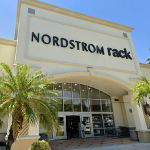In a survey released today by Outdoor Industry Association (OIA), small businesses reported their revenue expectations for 2009 continue to fall and employment indicators continue to decline. Bottom line: Outdoor businesses have a more negative view about recovery than they did in the fall of 2008 or in the spring of 2009.
OIA, in conjunction with Piper Jaffray Companies, recently surveyed industry executives with respect to their view of current economic prospects, recovery timeline, cost inflation, and the effect of tightened credit market on near-term business operations. Results of that survey are now available in a new report entitled, The Piper Jaffray Outdoor Industry Survey.
This was the third survey conducted by OIA and Piper Jaffray in the past nine months, and reflected a cautious and realistic picture of the economic situation facing the industry.
Nearly all respondents were independent businesses with revenues less than $50M annually, which provides an excellent gauge of the independent channel within the outdoor community. The majority of respondents identified themselves as either vendors or retailers.
Among the highlights:
- Concern has continued to grow: When asked to indicate the level of concern surrounding current economic conditions affecting their business, 57% indicated they are “very concerned,” up from 47% last spring and 37% last fall. The highest levels of concern have shifted to retailers with 88% of them signaling they are very concerned. Just 44% of vendors have the same level on concern, signaling mismatched expectations.
- Recovery expectations for 2009 continue to fall: In our first survey in November 2008, all respondents expected sales to either rise or remain the same in 2009. This past spring, expectations had declined with only 53% of respondents indicating revenues flat or up vs. last year. Our most recent survey shows only 45% of businesses expected revenues to increase in 2009.
- Businesses prepared for slow-down: Revenue expectations continue to decline. In the fall survey, more than three-quarters of respondents projected revenues in 2009 would be above 2008. This spring, about one-third expect 2009 revenue to top 2008 and nearly one-fourth expect revenues to decrease significantly. Comparing these results with our current survey, it appears that most respondents to date have been overly optimistic. Our current survey has only 28% of respondents indicating revenues will be higher than last year, and only 5% are indicating revenues will be up significantly.
- Retailers v. Vendors: The current decline in revenue trends appears to be more pronounced with retailers. 71% of respondents are expecting a decline in 2009 vs. only 47% of respondents in the vendor community. We note these numbers are higher than our spring results. Overall, we believe 2009 has proved more challenging than originally expected, but tight inventory levels and traffic stabilization (albeit at lower levels) has buoyed profitability in the first half of the year. Broadly speaking, this has been a common theme among retailers in the publicly traded domain as well.
- Recovery expectations continue to push back: A whopping 91% of respondents believe the recovery will be no sooner than the first half of 2010. 22% of those businesses actually expect the recovery to come after 2010. Clearly the second half of 2009 was an optimistic business outlook in November of last year when 88% of respondents believed the recovery would come this fall.
- Employment Indicators continue to decline: Over the last three months, 40% of respondents indicated employment has decreased v. 38% in the spring. Unfortunately, respondents outlook for the future also decreased with 25% expecting employment declines vs. only 20% in the spring. Overall employment does not appear to be improving and believe revenues need to improve for employers to gain confidence.
- Inventory reductions continue: In response to these economic shifts, respondents report that they have taken appropriate steps in terms of inventory reductions. 58% of businesses plan to lower inventory levels over the next three months, consistent with our spring results. However, 18% of respondents plan to reduce inventory significantly, and acceleration from only 12% this spring. Overall, we believe the trend of ordering cautiously will continue until consumer demand begins to reaccelerate.
As the report concludes, “We think respondents maintain a realistic view of future business trends, sourcing costs, and inventory reductions which should benefit future profitability if sales trends remain stable or improve. While revenue declines are prevalent throughout the sector, we believe employment reductions, cheaper goods and fewer markdowns will continue to stabilize margins in the second half of 2009.”














